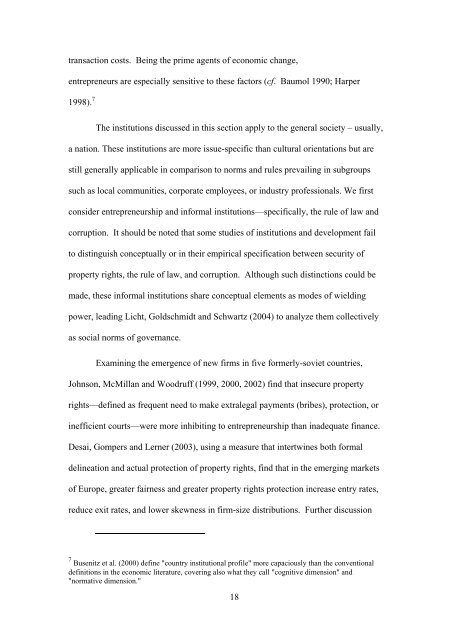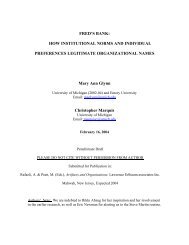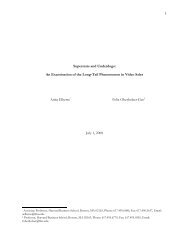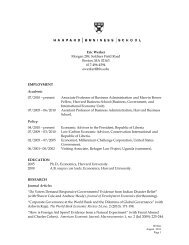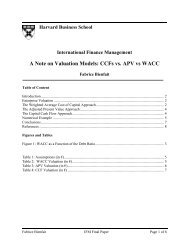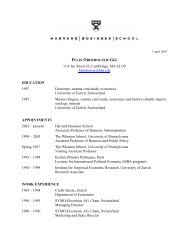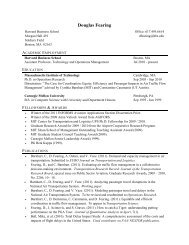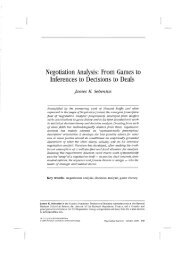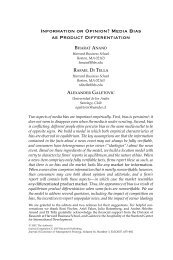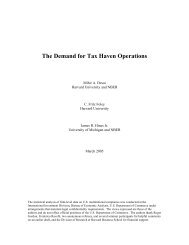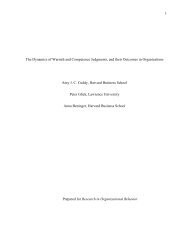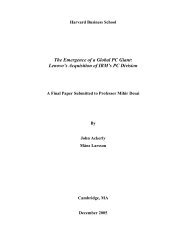Social Dimensions of Entrepreneurship. - People. hbs .edu ...
Social Dimensions of Entrepreneurship. - People. hbs .edu ...
Social Dimensions of Entrepreneurship. - People. hbs .edu ...
You also want an ePaper? Increase the reach of your titles
YUMPU automatically turns print PDFs into web optimized ePapers that Google loves.
transaction costs. Being the prime agents <strong>of</strong> economic change,<br />
entrepreneurs are especially sensitive to these factors (cf. Baumol 1990; Harper<br />
1998). 7<br />
The institutions discussed in this section apply to the general society – usually,<br />
a nation. These institutions are more issue-specific than cultural orientations but are<br />
still generally applicable in comparison to norms and rules prevailing in subgroups<br />
such as local communities, corporate employees, or industry pr<strong>of</strong>essionals. We first<br />
consider entrepreneurship and informal institutions—specifically, the rule <strong>of</strong> law and<br />
corruption. It should be noted that some studies <strong>of</strong> institutions and development fail<br />
to distinguish conceptually or in their empirical specification between security <strong>of</strong><br />
property rights, the rule <strong>of</strong> law, and corruption. Although such distinctions could be<br />
made, these informal institutions share conceptual elements as modes <strong>of</strong> wielding<br />
power, leading Licht, Goldschmidt and Schwartz (2004) to analyze them collectively<br />
as social norms <strong>of</strong> governance.<br />
Examining the emergence <strong>of</strong> new firms in five formerly-soviet countries,<br />
Johnson, McMillan and Woodruff (1999, 2000, 2002) find that insecure property<br />
rights—defined as frequent need to make extralegal payments (bribes), protection, or<br />
inefficient courts—were more inhibiting to entrepreneurship than inadequate finance.<br />
Desai, Gompers and Lerner (2003), using a measure that intertwines both formal<br />
delineation and actual protection <strong>of</strong> property rights, find that in the emerging markets<br />
<strong>of</strong> Europe, greater fairness and greater property rights protection increase entry rates,<br />
r<strong>edu</strong>ce exit rates, and lower skewness in firm-size distributions. Further discussion<br />
7 Busenitz et al. (2000) define "country institutional pr<strong>of</strong>ile" more capaciously than the conventional<br />
definitions in the economic literature, covering also what they call "cognitive dimension" and<br />
"normative dimension."<br />
18


